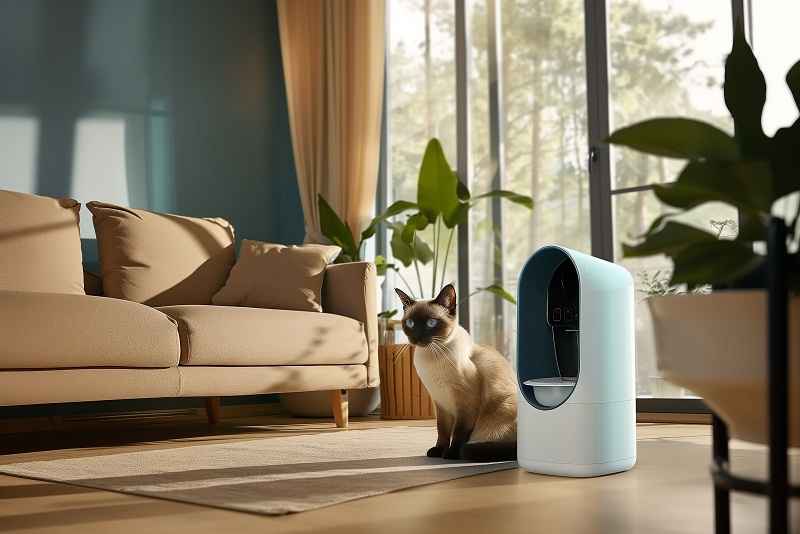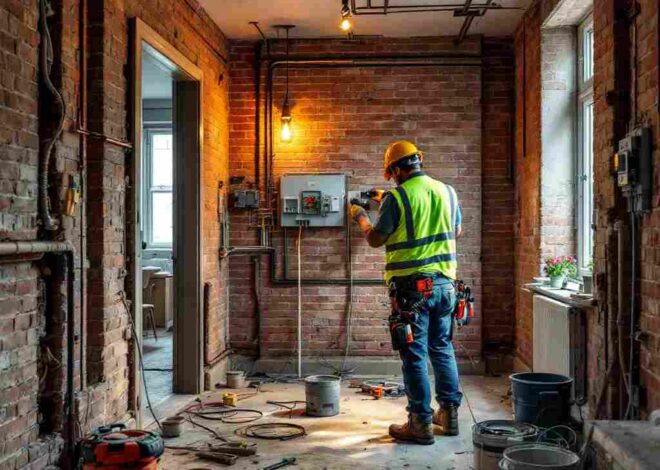
DIY Air Filter Replacement: Save Money and Improve Indoor Air Quality
Are you tired of sneezing through your favorite movie night or battling seasonal allergies indoors? It might be time to take a closer look at the air quality in your home! With rising costs and increasing concerns about indoor pollutants, there’s never been a better moment to roll up your sleeves and tackle one of the simplest yet most effective home maintenance tasks: replacing your air filter. In this guide, “Air Filter Replacement” we’ll walk you through the DIY process step-by-step, showing you how easy it is to save money while dramatically improving the air you breathe. Say goodbye to dust bunnies and hello to fresh, clean air—let’s get started on transforming your living space today!
Introduction to the Importance of Regularly Replacing Air Filters
Indoor air quality plays a crucial role in your home’s comfort and health. One essential component often overlooked is the air filter. Regularly replacing these filters can significantly impact not just your HVAC system’s efficiency, but also the overall air you breathe every day.
Did you know that dirty or clogged filters can lead to higher energy bills? They restrict airflow and force your system to work harder than necessary. This can result in costly repairs down the line. Plus, stale indoor air may contain allergens, dust, and pollutants that affect your family’s health.
So why not take matters into your own hands? DIY air filter replacement is an easy task that saves money while improving indoor air quality at the same time. Let’s dive into how you can seamlessly tackle this project yourself!
Benefits of DIY Air Filter Replacement
Replacing your air filter yourself can lead to significant savings. Professional services often come with hefty fees. By handling this task on your own, you keep more money in your pocket while maintaining a vital aspect of your home.
Another perk is the convenience it offers. You set the schedule based on what works for you. No need to wait for an appointment or accommodate someone else’s timeline.
DIY air filter replacement also allows you to gain valuable knowledge about your HVAC system. Understanding how it operates enhances your ability to troubleshoot issues down the line.
Additionally, taking this task into your own hands promotes a sense of accomplishment and empowerment. Knowing that you’re actively improving indoor air quality adds a personal touch to home maintenance efforts.
Step-by-Step Guide to Replacing Your Home’s Air Filters
Gathering the necessary materials is your first step. You’ll need a new air filter, gloves for cleanliness, and possibly a vacuum to clear any dust around the unit.
Next, locate your old air filter. This could be in various spots depending on your HVAC system—often near the furnace or in an intake vent. Carefully remove it; you might encounter some resistance due to dirt accumulation.
Choosing the right replacement filter is crucial. Check the size printed on the side of your old filter or refer to your HVAC manual for specifications. Make sure you select one that meets your home’s needs.
Now comes installation. Slide the new filter into place with airflow arrows pointing in the correct direction—as specified by most manufacturers—to ensure optimal performance and efficiency while keeping indoor air clean and fresh.
-
Gathering Necessary Materials
Before diving into the air filter replacement process, gather your materials. Having everything on hand will make the task seamless.
Start with your new air filter. Know the dimensions and type that fits your HVAC system. Most filters come in standard sizes, but check for specifics.
Next, grab some basic tools. A screwdriver might be needed to access certain units. It’s always good to have a flashlight handy too; it helps illuminate those hard-to-reach spots.
Don’t forget about cleaning supplies! A damp cloth or vacuum can help remove dust from around the filter area before installation.
Lastly, consider wearing gloves if you’re sensitive to dust or allergens. This small step can enhance comfort during the process while ensuring a cleaner workspace.
-
Locating and Removing Old Air Filter
To locate your old air filter, start by identifying where your HVAC system is situated. Most filters are found in the return air duct or blower compartment.
Once you’ve pinpointed the location, turn off your heating or cooling system to ensure safety during the process. This step is crucial for both you and the unit.
Next, carefully slide out the access panel if necessary. Depending on your system’s design, it might just pull away or require a few screws to be removed.
With clear access now available, gently pull out the old air filter. Be cautious; some dust and debris may escape as you do this.
Inspect its condition closely—this will give insight into how often replacements might be needed moving forward. If it’s particularly dirty or clogged with dust bunnies, it’s time for that new filter!
-
Choosing the Right Replacement Filter for Your HVAC System
Selecting the right replacement filter for your HVAC system is crucial. Different systems have specific requirements, and not all filters fit every unit.
Start by checking your owner’s manual or the existing filter for its dimensions. Common sizes include 16×20 inches or 20×25 inches, but variations exist.
Next, pay attention to the MERV rating. This rating indicates a filter’s ability to capture particles. A higher MERV means finer filtration but may restrict airflow in some systems. Always consult with an expert if you’re unsure about compatibility.
Consider other features too, such as HEPA filters for enhanced allergen control or activated carbon layers that neutralize odors. Your choice should align with both your air quality needs and any restrictions from your HVAC system manufacturer.
Lastly, remember that regular maintenance of your chosen filter will ensure optimal performance and longevity.
-
Installing the New Air Filter
Once you have your new air filter ready, it’s time to install it. Begin by ensuring that the airflow direction is correct. Most filters have arrows indicating which way the air should flow. This detail is crucial for optimal performance.
Carefully slide the new filter into its designated slot. Make sure it fits snugly without any gaps around the edges. An improper fit can compromise your system’s efficiency and allow dust and allergens to escape back into your home.
After placing the filter, check for any loose debris in the compartment before closing it up. A clean area will enhance airflow and improve overall indoor air quality.
Finally, securely close any access panels or grilles that were removed during this process. Your HVAC system is now equipped with a fresh filter, ready to work more effectively and keep your environment healthy.
Tips for Maintaining Clean Indoor Air Quality
To maintain clean indoor air quality, start by regularly dusting and vacuuming your home. This simple practice helps reduce allergens like dust mites and pet dander.
Consider investing in a high-efficiency particulate air (HEPA) filter for your vacuum cleaner. These filters trap smaller particles that regular vacuums might miss, ensuring a deeper clean.
Introduce houseplants into your living spaces. Many plants naturally filter toxins from the air while adding beauty to your environment.
Keep windows open when weather permits. Fresh outdoor air can dilute indoor pollutants, promoting better airflow throughout your home.
Use natural cleaning products whenever possible. Conventional cleaners often contain harmful chemicals that can contribute to poor indoor air quality.
Lastly, avoid smoking indoors and limit the use of candles or incense to minimize smoke-related pollutants lingering in the air.
-
Additional Measures to Improve Indoor Air Quality
Improving indoor air quality goes beyond just replacing your air filters regularly. Consider incorporating houseplants into your space. Certain plants, like spider plants and peace lilies, naturally filter toxins from the air.
Ventilation plays a crucial role too. Open windows when weather permits to allow fresh air circulation throughout your home. This simple act can significantly reduce indoor pollutants.
Another effective method is using an air purifier equipped with HEPA filters. These devices trap small particles that standard HVAC systems might miss, ensuring cleaner breathing spaces.
Also, be mindful of cleaning products you use daily. Opt for eco-friendly options that emit fewer volatile organic compounds (VOCs). Keeping these harmful substances at bay contributes to better overall health.
Regularly vacuuming carpets and upholstery helps eliminate dust mites and allergens lurking in fibers. This proactive approach makes a noticeable difference in maintaining healthier indoor environments.
-
How Often Should You Replace Your Air Filters?
The frequency of air filter replacement can vary based on several factors. Generally, it’s recommended to check your filters every month. This allows you to assess their condition and decide if it’s time for a change.
For households with pets or allergies, replacing filters every 30 days is ideal. Pet dander and pollen can clog filters quickly, reducing indoor air quality significantly.
In homes without pets or smoke, a replacement every three months may be sufficient. However, seasonal changes can affect this schedule as well; during peak allergy seasons or heavy usage periods like summer and winter, more frequent changes might be necessary.
Keep an eye out for visible dirt buildup or reduced airflow from your HVAC system—signs that it’s definitely time for new filters. Setting reminders on your calendar can help keep you consistent with replacements so that fresh air flows continuously throughout your home.
Cost Comparison: DIY vs. Professional Air Filter Replacement
When it comes to air filter replacement, the cost can vary significantly between DIY and professional services. Opting for a do-it-yourself approach typically saves you money upfront. A standard air filter costs anywhere from $10 to $30, depending on brand and type.
On the other hand, hiring a technician might set you back $75 to $150 per visit. This fee includes labor and often additional service charges that can add up quickly.
While DIY allows for immediate savings, consider your time investment too. Replacing filters yourself means setting aside time for research and installation.
However, professionals bring expertise that can ensure proper installation and maintenance checks that may catch underlying issues early. The choice ultimately depends on your budget and comfort level with home maintenance tasks.
Eco-Friendly Options for Air Filters
When it comes to air filter replacement, eco-friendly options are becoming increasingly popular. These filters not only help purify indoor air but also reduce the environmental impact.
Look for filters made from natural materials like cotton or fiberglass. These biodegradable choices break down more easily than synthetic alternatives.
Another option is high-efficiency particulate air (HEPA) filters that capture allergens without releasing harmful chemicals back into the environment. They last longer, which means less waste overall.
Some brands even offer reusable filters that can be washed and used multiple times, cutting down on landfill contributions while saving you money in the long run.
Additionally, consider carbon-activated filters designed to eliminate odors naturally instead of masking them with artificial fragrances. This choice enhances your home’s atmosphere without compromising health or sustainability.
Troubleshooting Common Issues with DIY Air Filter Replacement
When tackling DIY air filter replacement, you might encounter a few hiccups along the way. One common issue is selecting the wrong size filter. Before making a purchase, double-check your HVAC system’s specifications to ensure a proper fit.
Another problem could arise during installation. If the new filter doesn’t slide in smoothly, it may be oriented incorrectly. Make sure it aligns with the airflow direction indicated on the side of the filter.
If you notice reduced airflow after replacing your air filter, check for obstructions or debris that might have built up around the vent areas. Sometimes, filters can also become blocked quickly if they are not suited for your environment.
Lastly, keep an eye out for unusual noises coming from your HVAC system post-replacement—this could indicate improper installation or other underlying issues needing attention.
Conclusion: The Importance of Regular Maintenance for a Healthier
Regular air filter replacement is essential for maintaining a healthy home environment. Clean air filters improve indoor air quality, reducing allergens and pollutants. This simple DIY task not only saves you money but also enhances the efficiency of your HVAC system.
By taking charge of your home’s air filter replacements, you empower yourself to create a cleaner atmosphere for you and your family. Remember that fresh air can significantly impact your comfort and well-being.
Staying proactive about this maintenance will lead to long-term benefits. A few minutes spent on this task every couple of months translates into healthier living spaces and improved energy efficiency in your home. Prioritizing regular maintenance can transform the way you breathe indoors, contributing to better health outcomes over time.


